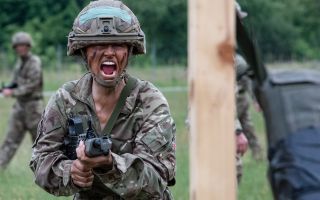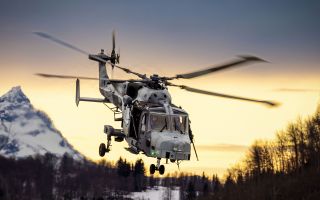Ukraine's battlefield is evolving and new report outlines learnings for the UK
The war in Ukraine is now in its third year, and the battlefield is constantly evolving.
Both sides have adapted, new weapons, new tactics, all in a race to stay ahead.
So what can Western militaries, including the UK, take from this?
A new report from defence and security think Royal United Services Institute (RUSI) breaks down in huge detail how the fight has changed and what it could mean for future conflicts.
Below are BFBS Forces News's Claire Sadler's key takeaways.
Firepower is still needed, but so is precision
Early in the conflict, Russia relied on mass armoured assaults, but they proved costly against Ukrainian anti-tank missiles like NLAW and Javelin.
Russia adapted, relying more on grinding attrition, electronic warfare, artillery and missile strikes to neutralise Ukraine’s advantage.
Ukraine in turn has refined its use of fibre-optic one-way attack drones, cluster munitions, precision artillery, surprise and concentration of force to break through Russia's tough defences.
The battlefield is no longer just about firepower, it's also about precision.
Unable to achieve air superiority, Russia turned to glide bombs providing a stand-off strike capability that bypasses the need to penetrate Ukrainian airspace.
Their mass production has dramatically increased Ukrainian casualties, forcing defensive tactics to evolve, with troops dispersing and relying on uncrewed systems for protection.
Attrition and adaptation
As weapons change, so do tactics, and this war has become one of attrition and adaptation.
Ukrainian forces have moved away from Nato-style combined arms manoeuvre warfare, instead focusing on small-unit assaults, trench-clearing tactics and drone-guided artillery strikes.
And Russia?
It has doubled down on defence, creating elaborate trench networks protected by minefields and heavy artillery.
But, despite the evolving technology and tactics, the war is static in many ways.
It's defined by long drawn-out stalemates and entrenched positions reminiscent of the First World War.
What does this all mean for the UK military?
Firstly, drone warfare is here to stay.
The ability to deploy, counter and defend against drones is essential.
The RUSI report suggests counter-drone nets and other simple stocks should be available alongside traditional stores like corrugated iron or timber.
Additionally, large-scale ground offensives without air superiority may be a thing of the past.
Future conflicts will require highly mobile, well-trained units supported by real-time intelligence.
Finally, electronic warfare and countermeasures will be critical.









